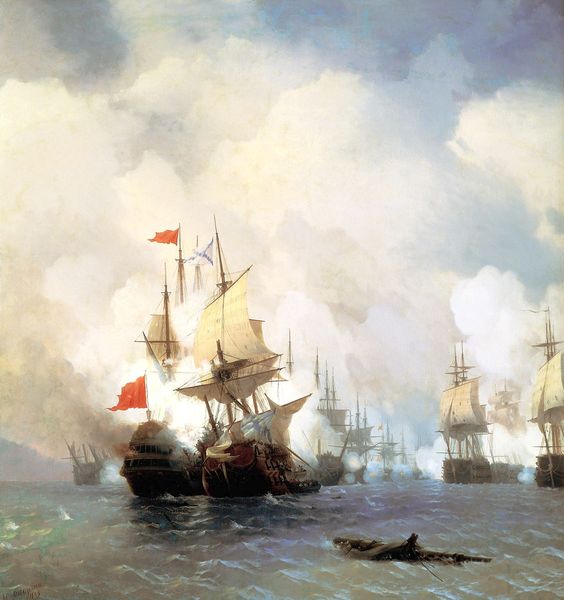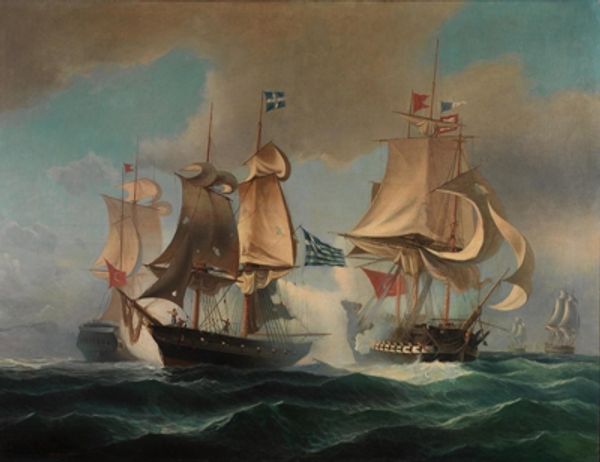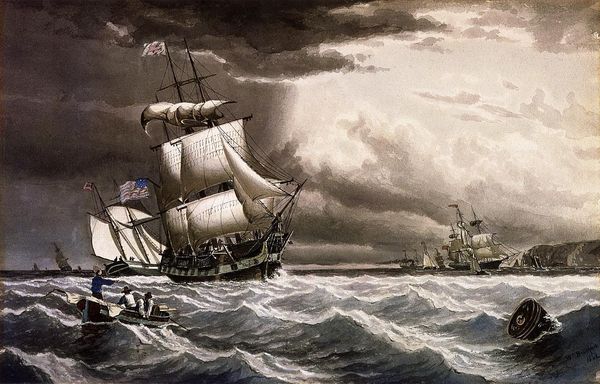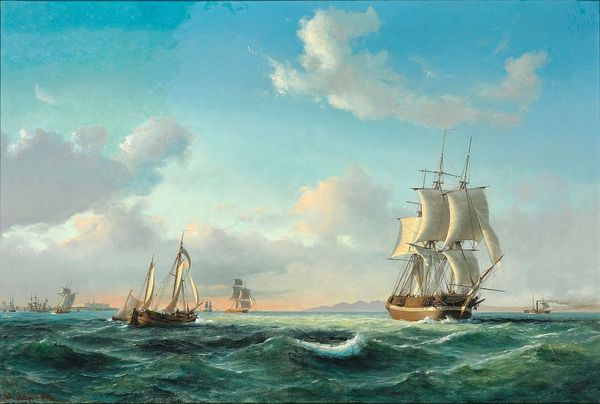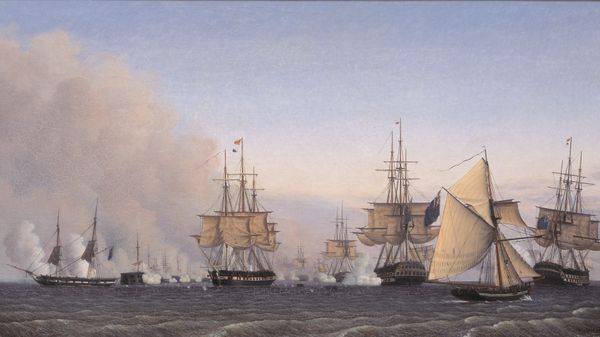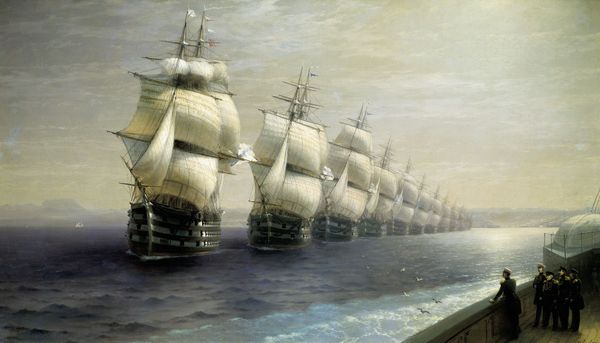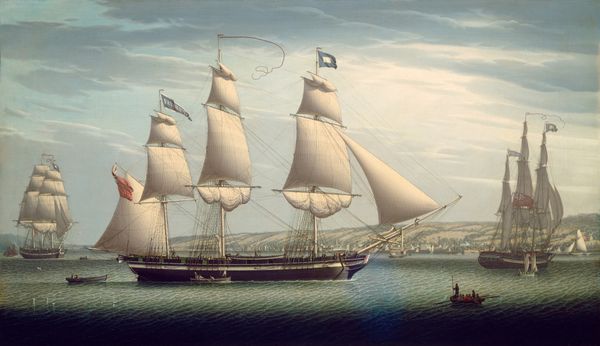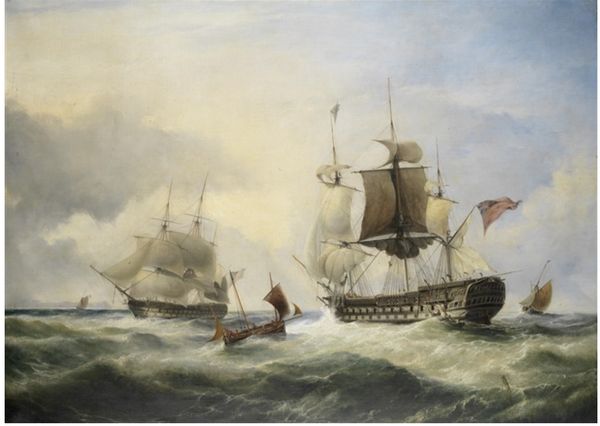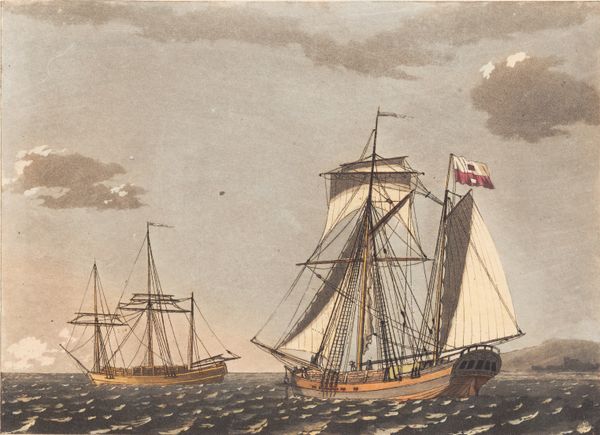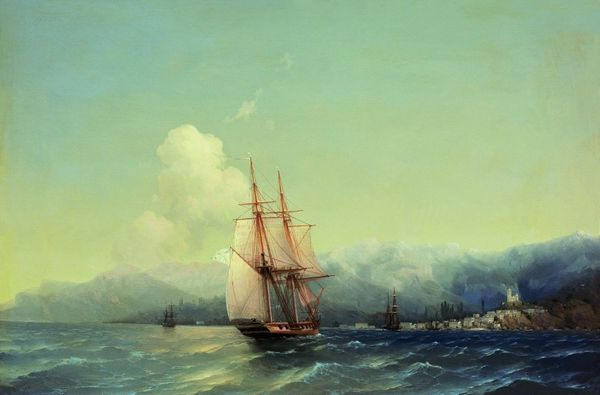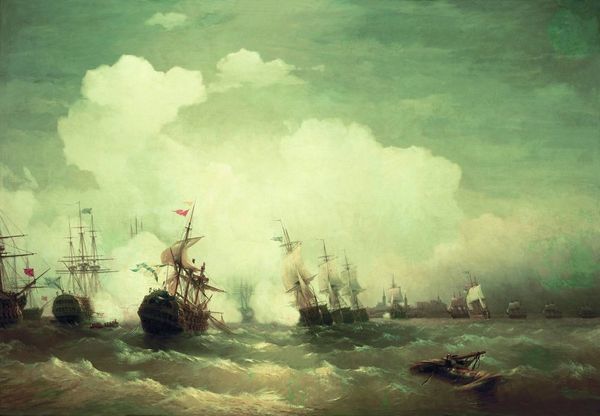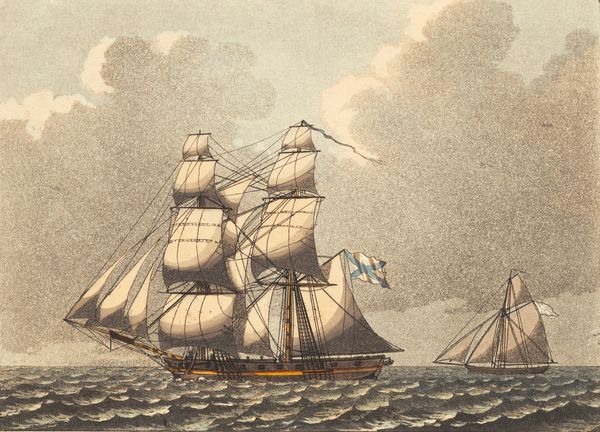
The brig "Mercury" was attacked by two Turkish ships 1892
0:00
0:00
ivankonstantinovichaivazovsky
Aivazovsky National Art Gallery, Feodosiya, Ukraine
Dimensions: 339 x 212 cm
Copyright: Public domain
Curator: This is Ivan Aivazovsky's 1892 painting, "The Brig 'Mercury' Was Attacked by Two Turkish Ships." Editor: My first impression is of intense movement and drama. The clash of sea and smoke against the sky creates a strong sense of turbulence, and vulnerability. Curator: Aivazovsky was known for his romantic depictions of naval battles. In historical context, this painting likely celebrates Russian naval victories against the Ottoman Empire. Do you think it glorifies violence, or something else? Editor: The painting definitely presents a specific, perhaps propagandistic, view of conflict. But more broadly, the ships become vehicles through which we understand the fraught relationship between the West and the East and question power dynamics that are relevant even today. It feels timeless, given ongoing geopolitical struggles across the region. Curator: And certainly Aivazovsky's skill in rendering light and water cannot be denied. These details contribute to the overall emotional impact and underscore his place in art history. Note how he has deployed brushstrokes to convey dynamic, churning water—all central elements to his artistic technique. Editor: Yes, Aivazovsky turns water into more than just water—it’s about raw energy and how society interprets conflict and victory. By focusing on such subjects he engages viewers to ponder themes related to aggression and nationhood. Curator: From a historical perspective, paintings such as these shaped public opinion about naval power and contributed to national identity. It's not just art; it’s social history vividly presented. Editor: Reflecting on our conversation, it's evident this piece provokes us to engage not only with history, but how such histories resonate today in light of persistent imperial tensions. Curator: Absolutely; his rendering of history also invites us to remember that even art is inseparable from the cultures from which it comes.
Comments
No comments
Be the first to comment and join the conversation on the ultimate creative platform.
